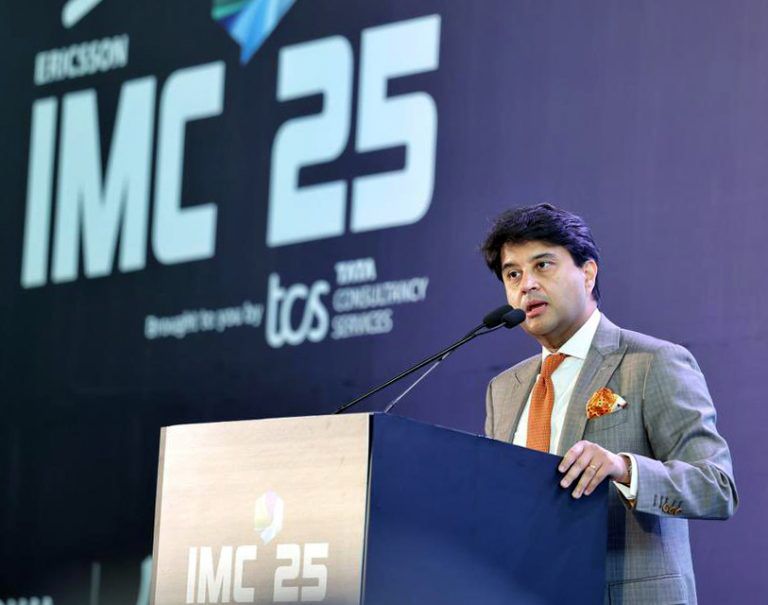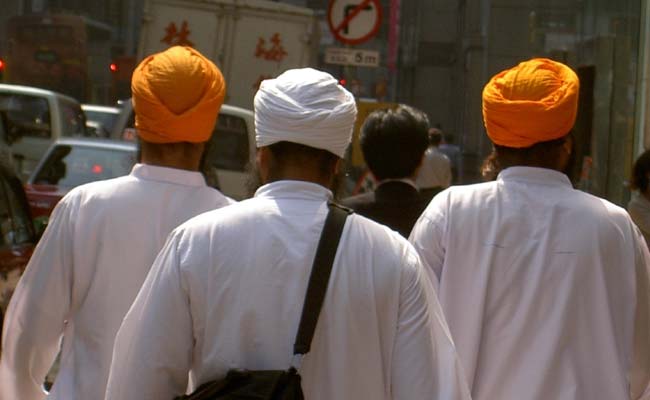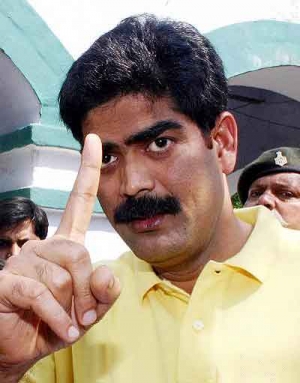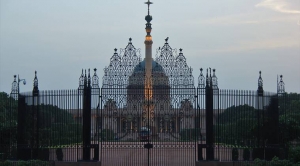India’s Telecom Sector Poised to Contribute 20% to GDP in Next Decade: Scindia

New Delhi, Oct 9, 2025: India’s telecom sector is set to play an increasingly vital role in the nation’s economy, with its contribution to GDP expected to rise from the current 12-14 per cent to 20 per cent over the next 10 to 12 years, Union Minister for Communications and Development of North Eastern Region Jyotiraditya Scindia said on Thursday. Speaking at the Nation Builders Summit during India Mobile Congress 2025, Scindia highlighted the government’s evolving role as a facilitator rather than a strict regulator, fostering innovation and collaboration with private industry. He described the sector as highly competitive and largely deregulated, paving the way for rapid growth and technological advancement. “This is a defining decade for India. It is a time to not just be vocal about local innovation but to design, solve, and scale solutions for the world from India,” Scindia said, emphasizing the country’s growing role in global technology development. He announced a major milestone: India has developed an indigenous 4G technology stack, making it the fifth country in the world to achieve this capability. Remarkably, the development took only 20 months from concept to a full working 4G stack. Plans are underway for BSNL to expand its 4G network, which will eventually be upgraded to 5G, ensuring wider connectivity and faster digital services across the country. Scindia also reflected on the rapid digital transformation India has witnessed over the past decade. The country now boasts 1.2 billion mobile subscribers, representing 20 per cent of the world’s mobile population. Internet subscriptions have jumped from 250 million 11 years ago to nearly 974 million today, while broadband coverage has grown from 60 million to 944 million. These numbers underscore India’s emergence as a global digital powerhouse. Highlighting India’s entrepreneurial spirit, particularly among youth in rural areas, Scindia noted that many leading companies listed on the Nifty or Bombay Stock Exchange, which were once concentrated in major metropolitan cities, are now operating from Tier-2 and Tier-3 towns. This shift reflects a broader decentralization of opportunity and talent, allowing communities across India to participate in the digital economy. Scindia credited government initiatives under Prime Minister Narendra Modi for creating “the world’s largest digital highway,” connecting 1.4 billion people and facilitating access to services, education, and economic opportunities nationwide. He also pointed to India’s strides in semiconductor manufacturing, with fabs being built from Gujarat to Assam, signaling the country’s growing self-reliance in critical technology infrastructure. “The transformation in India’s telecom and digital sectors mirrors the impact of the Industrial Revolution. Roads and railways connected people, production, and opportunity at scale then, and today digital networks are doing the same, enabling innovation, entrepreneurship, and economic growth across the country,” Scindia said. With strategic policy support, private sector collaboration, and technological advancements, India’s telecom sector is expected to not only boost GDP but also drive social and economic transformation across urban and rural areas, laying the foundation for a connected and digitally empowered nation. India’s Telecom Sector Set to Drive 20% of GDP in Next Decade India’s telecom industry is on track to boost its contribution to GDP from 12-14% today to 20% over the next decade, says Communications Minister Jyotiraditya Scindia. Speaking at India Mobile Congress 2025, he highlighted India’s indigenous 4G technology stack and the planned expansion of BSNL’s network to 5G. With 1.2 billion mobile subscribers, internet access surging to 974 million, and broadband coverage expanding nationwide, India is becoming a global digital hub. Scindia emphasized the role of innovation, entrepreneurship in Tier-2 and Tier-3 towns, and government support in connecting people, driving growth, and creating opportunities for all.




